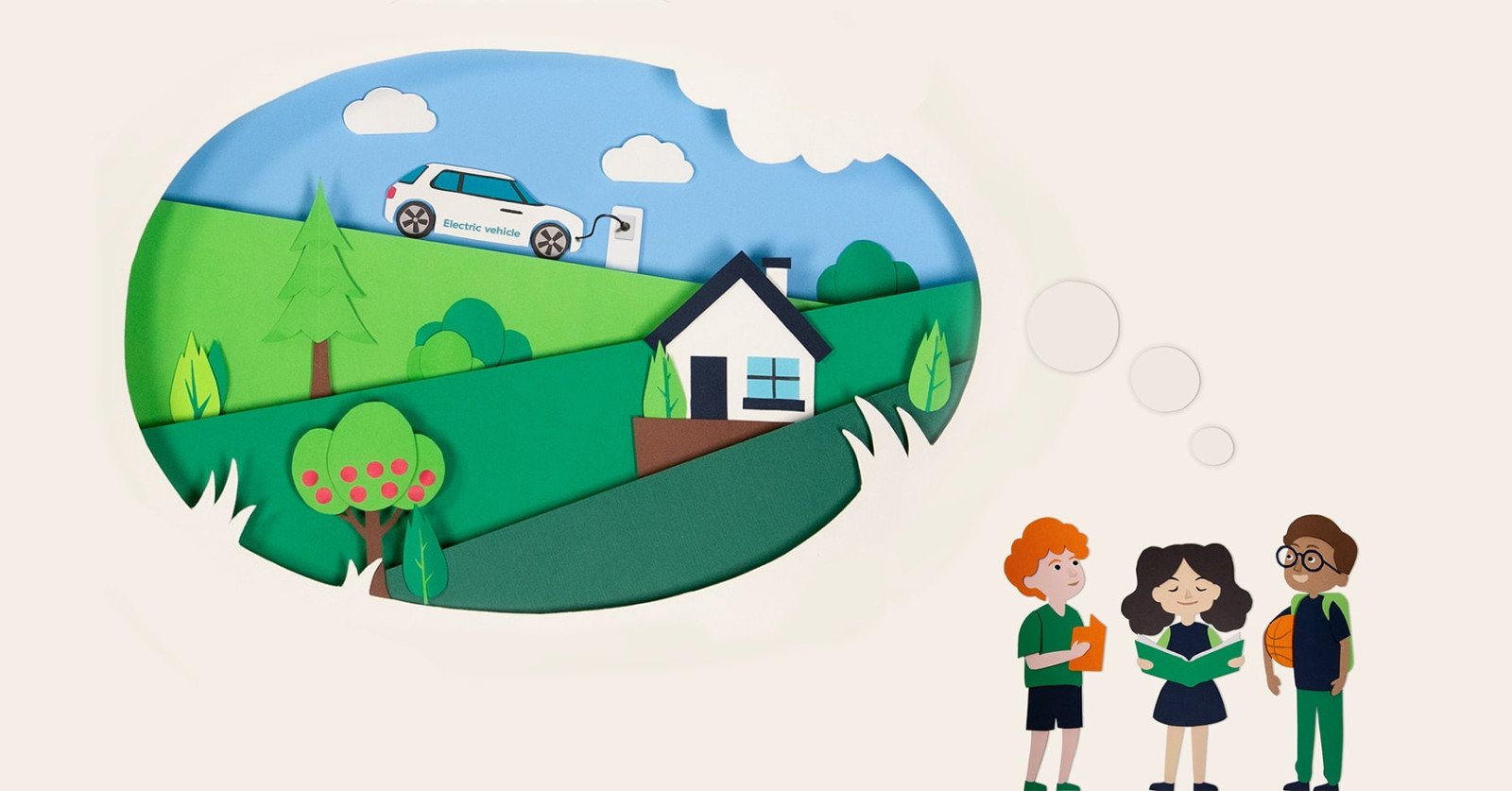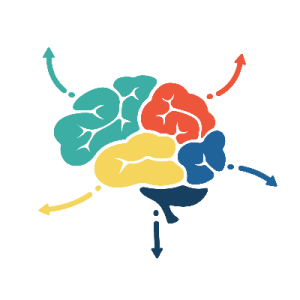Our green future
Visualize a greener future, discover how we are getting there and design ideas that will make this future come true.

Overview
Discover how we impact the world around us with our actions. This activity will lead students through visioning what a greener future might look like, and take part researching and designing products and technologies for a sustainable future.
Instructions
What you'll need
- "Our green future" slideshow (French version available)
- Projector, computer, screen for slideshow
- "Visioning a greener future" story (French version available)
- Access to tablets or computers for internet research. Plan for one per student.
Visioning a greener future
- Pull up the “Our green future“ interactive slideshow.
- Discuss climate change and how our individual actions can have a positive impact and how we can all be doing actions that help protect the Earth.
- At slides 4 to 6, share that in B.C., most of our energy comes from water (hydroelectric dams), which is clean, renewable energy. However, if we waste this energy, we are wasting our natural resources. Natural resources come from the Earth like water, trees and fish. By saving energy we can protect our natural resources, and our Earth.
- At slide 7, pause the slideshow and open the “Visioning a greener future” story. Invite students to settle comfortably, close their eyes and imagine the world in the story you read. This story can be read as is or be adapted to reflect specific landscapes or highlights from your community.
- Return to the slideshow at slide 8 and have a brief discussion on ways to help us get to a greener future using some of the scenarios from the story like smart controls in our homes, electric cars and people powered transport, creating green community spaces, clean, green energy and energy conservation.
Research the leaders
- Slides 9-11 are three examples of companies and communities that are finding greener energy options. Introduce these projects to students and then pause the slideshow at slide 12. Ask students to choose one of the projects to research. This is a short research project; in about 15 minutes students should be able to find 3-5 interesting facts about their project.
- The information can be easily accessed online or through these links:
You could alternatively have students research a green energy project local in your community. Have students share their facts with the class.
Energy saving inventions
- Before students start thinking about invention ideas, share the energy use facts on slide 13.
- On slide 14, present to students that they’ll be inventing their own product or technology to help people save energy.
- Divide class into groups of 2-3 students per group.
- Students are encouraged to use creativity and think outside of the box to invent a product or technology.
- Share examples like a stationary bike-powered smoothie maker or a shower that sings to remind you that it's been 5 minutes.
- Have students create a poster or short infomercial to share their invention ideas with the rest of the class.
- At slide 15 complete the activity by inviting students to reflect on how our own changes and actions, big or small, can help build a better future.
Modify or extend this activity
- Find a community group taking action on an environmental topic that interests you and join/volunteer or do an activity with the group.
- Individual actions are amplified when working together.
Curriculum Fit
Our activities provide a link to the core competencies of the curriculum. The activities engage students in sharing ideas and solutions, having fun learning and sharing with others through creative thinking and making.
Core competencies
Communications
- Connect and engage with others (to share and develop ideas)
- Collaborate to plan, carry out, and review constructions and activities
Thinking
- Creative thinking: novelty and value
- Critical thinking: develop and design
Social responsibility
- Contributing to community and caring for the environment
Applied Design, Skills and Technologies 4, 5, 6, 7
Curricular competencies
Applied design
- Defining
- Ideating
Science 5, 7
Content
- The nature of sustainable practices around B.C.’s resources (Grade 5)
- Evidence of climate change over geological time and the recent impacts of humans (Grade 7)
Assessments
- Assess students’ ability to respectfully listen and reflect during the visioning story.
- Assess students’ ability to share ideas, listen to each other and take action.
- Assess students cooperation and creativity during the activity inventing a product.
Teaching Notes
Energy conservation in B.C.
In B.C., most of our electricity comes from hydroelectric dams. BC Hydro uses the power of falling water to create clean, reliable electricity. 97% of the electricity generated is clean energy. Learn more about our electricity in this video.
Conservation of electricity in B.C. is important because wasting energy also wastes our Earth’s resources. Young people can protect and care for our environment. We can empower them by helping them understand ways to save energy and in a fun, creative way, share this knowledge with others.
The following are some energy saving tips:
- Turn off unnecessary lights, and/or switch to LED’s, which reduce energy use by 75% compared to incandescent lights.
- Take shorter showers and switch to a low flow showerhead. A low flow showerhead uses nearly half the water / minute of a regular showerhead. This reduces both water and energy.
- Turn the water off when washing hands and brushing teeth. Leaving the water running can waste 10 litres of water per minute.
- Fix leaky faucets, as a dripping tap can pour 150 litres of water down the drain in one week.
- Unplug unused electronics. Standby power can account for 10% of an average household's annual electricity use.
- Install and manage a thermostat. Programming to lower your heating at night and when you are out can save a lot of energy.
- Be strategic with window coverings. Closing curtains and blinds at night can keep the heat in.
- Wash laundry in cold water, run full loads and hang it out to dry. This will save energy and your clothes will last longer.
- If you are using a dryer, toss a dry towel in too. This will significantly reduce drying times.
- Use the microwave, crock pot or toaster oven instead of an oven to save energy.
See BC Hydro energy saving tips for additional tips and cost savings.








